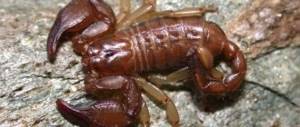I was bitten by a tick, what should I do? Every year, hundreds of thousands of patients turn to medical institutions asking for help removing a tick. Unfortunately, more than one hundred thousand of the victims are children. When bitten by a tick, about 10 thousand people become ill with tick-borne encephalitis. The highest season of infection occurs in the spring -summer period and slightly less in the fall. It should be noted that not all ticks are dangerous. However, if an insect is infected with the tick-borne encephalitis virus, then it is its carrier throughout its life.
In the majority of such unpleasant incidents (in 80% of cases), the bite is still harmless. And the fact that someone bit you is not noticeable at first. At the moment of a bite, this cunning insect secretes a special anesthetic substance. That is why a person does not feel the bite. You just need to understand that when you come from the forest, from a walk in the park, or when you come to the city from your dacha, you need to carefully examine yourself . It is also necessary to take into account that a dangerous insect can get into the house, “arriving” on the fur of a beloved animal (cat or dog) and, if the opportunity arises, move onto a person.
Symptoms of an encephalitis tick bite
After a tick bite, encephalitis (inflammation of the brain) often develops. There are several forms of tick-borne encephalitis. Each of them has its own manifestations.
1. Feverish form. It is characterized by the following symptoms:
- heat;
- headache of varying intensity;
- general weakness;
- a feeling of “ache” in the muscles;
- loss of appetite;
- nausea.
This form has the most favorable prognosis. The nervous system is not affected.
2. Meningeal form. Its manifestations are more severe. The nervous system is partially affected. Therefore, neurological symptoms are added to the symptoms of general intoxication and prevail:
- feeling of fear of light;
- a feeling of “stinging” in the eyes;
- hardening (stiff neck), head tilts back;
- headache of significant intensity;
- vomiting that does not bring relief;
- increased tone of the lower leg muscles;
- increased skin sensitivity;
- redness of the skin on the face, neck, shoulder girdle.
3. Meningoencephalitic form. She is the heaviest. Fatal outcomes with it are no exception. The prevalence of symptoms depends on the affected area of the brain. Characteristic:
- mental disorders;
- convulsions;
- paralysis;
- disturbances of consciousness of varying degrees;
- hallucinations;
- violation of facial expressions;
- disturbance of orientation in time and space;
- muscle twitching;
- trembling of limbs;
- swallowing disorders;
- respiratory failure.
4. Poliomyelitis form. The spinal cord is affected. The course of the disease in this form is the most severe. Characterized by disturbances of sensitivity and motor activity in the form of paralysis.
- Facial expressions are disrupted;
- muscle strength in the limbs decreases;
- different muscle groups atrophy.
5. Polyradiculoneuritic form. Characterized by damage to peripheral nerve endings. As a result, there are:
- body pain;
- tingling and “crawling” sensation;
- specific symptoms of Lasegue and Wasserman. Specific symptoms include pain along the sciatic nerve and in the front of the thigh when raising a straight leg.
A severe complication of this form is ascending paralysis, which first affects the limbs, then spreads to the trunk, respiratory muscles and tract, and tongue. Such a serious condition requires resuscitation measures.
6. A two-wave flow is also possible. Flu-like symptoms occur first. They last up to a week. The disease is progressing. When the virus penetrates deeper into the meninges, the condition worsens significantly, and brain symptoms appear.
Prevention
When relaxing outdoors with family or friends, be sure to ask your acquaintances to examine you from time to time, since most insect repellents have no effect on ticks. It is advisable to wear light clothing that covers your arms, legs and other parts of your body so that there are as few exposed areas as possible. Simple precautions will help you and your loved ones prevent tick-borne encephalitis.
The symptoms in children and adults who are faced with this disease, even with the mildest forms of the disease, are quite difficult to tolerate. Therefore, it is better to prevent a bite than to deal with its consequences later.
Encephalitis is a group of inflammatory diseases of the brain substance that are infectious, allergic or toxic in nature. If a patient is diagnosed with a disease, he should be hospitalized immediately. In case of encephalitis, a person is placed in an infectious diseases or specialized neurological department and is prescribed strict bed rest and constant monitoring.
Ticks and what other diseases they carry
Many people mistakenly consider ticks to be insects, but they belong to the class of arachnids. There are many varieties of these spiders, but few pose a danger to humans. Scabies is caused by scabies , granary mites lead to inflammation of the upper respiratory tract. Epidemics of typhus excited the whole world, but the fact that ticks were the carrier was not immediately clear. Ticks are also carriers of Q fever.
The most severe and common diseases caused by tick bites are tick-borne encephalitis and Lyme disease.
Patients often waste precious time for treatment, because the initial symptoms of encephalitis are very similar to acute respiratory infections. Moreover, the first signs do not begin to appear immediately, but about a week after the bite. This may be nausea, vomiting, headache, weakness. In general, the incubation period reaches thirty days. Infection occurs not only through a bite, but also through the raw milk of an infected animal. When boiled, the virus microorganisms die instantly, and can be stored raw for several months.
The best way to combat tick-borne encephalitis is direct vaccination, which is done according to a special scheme in the fall. The antibodies produced as a result cope very well with the virus at the initial stage. In the summer, an injection of immunoglobulin, administered intramuscularly once, will help.
Another infectious disease was named after the city of Lyme, located in the northern United States in the state of Connecticut. It was here that scientists uncovered the secret of a dangerous infection that had been fought for more than a century.
This disease is also called erythema migrans. Redness appears at the site of the bite, the center of which becomes lighter over time and forms a ring. Even if this disease is not treated, the erythema will disappear, but soon new rings will appear on new areas of the skin.
In the mid-seventies, in the vicinity of this town, a large group of children fell ill with arthritis, although this disease is not typical for children. It was clear that this was an infectious disease. More than five years later, the pathogen was finally found. The culprit turned out to be the microorganism Borrelia. This disease is characterized by relapses and transitions to the chronic stage.
After a tick bite, the disease can begin to develop in several scenarios. The nervous system and blood vessels may be affected. The first signs are very similar to those of the flu. If this infection is not treated within a year, it will turn into arthritis, and worst of all, it will lead to brain damage. The disease can be determined by taking a blood test.
In the United States, every resident in the country currently knows about it. But in Russia, only a few people have information about Lyme disease, although according to statistics, more than ten thousand people are affected by this virus every year.
There is no vaccine against this virus, so you need to try to prevent the tick from biting you. If a bite does occur, you should immediately consult a doctor.
Dangerous insect
Most often, the bloodsucker bites into soft and tender parts of the body:
- stomach;
- back;
- breast;
- armpits;
- gluteal area;
- groin area;
- neck (especially the places behind the ears).
It attaches itself to the human body precisely for the purpose of sucking blood. It bites through the delicate skin and releases a special organ called a “hypostome” from the throat into the wound. This organ is similar to a harpoon, covered with teeth, which hold the tick in the wound, so the insect is not so easy to pull out.
The bloodsucker is capable of sucking blood for up to 10 days, increasing in volume by more than one centimeter . Fresh human blood is necessary for the tick for the reproduction cycle, i.e., for reproduction. In this case, ticks are similar to mosquitoes, which also feed on human blood. However, a mosquito bite is less insidious, but a tick is a carrier of dangerous infections, one of which is encephalitis.
Treatment for a tick bite - what to do first
1. Removing a tick.
If a tick has been found attached to the body, it must be carefully removed.
Some recommend lubricating it and the bite site with oil, then carefully using tweezers to pull out the immobilized tick after 15-20 minutes.
Some people categorically do not recommend using oil, but advise grabbing the tick with tweezers and pulling it out carefully, using twisting movements.
It is definitely not right to try to pull it out with your bare fingers or try to squeeze it out. After the tick is removed, you need to lubricate the wound with iodine, brilliant green, and wash your hands.
The tick should be placed in a tightly closed container and taken to the hospital to be examined for encephalitis. Over the course of a month, be sure to closely monitor changes in your well-being.
2. Specific immunoglobulin . It must be administered, regardless of whether the virus is detected in the tick. This must be done within 3 days. Its dosage and dosage regimen vary depending on the form of encephalitis and the severity of the disease.
3. Detoxification therapy.
4. Symptomatic.
5. General strengthening.
6. If necessary, treatment begins with resuscitation measures . The patient is observed for 3 years after recovery.
How to avoid getting infected with tick-borne encephalitis?
First of all, you can resort to vaccination, which is considered the most reliable way to prevent the disease.
Even if an infected tick sticks to your skin, your body will be able to resist the virus. And to avoid a bite altogether, you should take precautions. To do this, you need to stay away from areas with tall grass and lush vegetation from April to July.
Clothes should be as closed as possible; it is advisable to wear a hat on your head. If the clothes are light shades, then it is much easier to notice an insect on it. Check both clothing and exposed areas of the body from time to time. This is also important after you return from a hike in the forest or nature. To clean items from tick larvae, they need to be washed in hot water. You can also use various repellents to protect your skin from ticks.
Consequences of an encephalitis tick bite
- With a febrile and two-wave form, the prognosis is favorable.
Weakness, decreased appetite, rapid heartbeat, and excessive sweating may persist for several weeks.
- With the meningeal form, a reduced emotional background, lethargy, and fear of light often persist for 4-8 weeks. Central nervous system disorders may remain in the form of migraines and headaches.
- The prognosis of the polio form is unfavorable. Its severe course usually leads to disability or death. Mortality is about 30 cases per 100 cases.
Causes
Most often, encephalitis is caused by viruses - neuroinfections; sometimes it also occurs as complications of various infectious diseases.
A common cause of progression is neuroinfection. It is worth noting that the etiology of the disease directly depends on its type. Thus, the reasons for the progression of viral encephalitis are: the bite of infected insects (usually carried by mosquitoes or ticks), the penetration of influenza, herpes, and rabies viruses into the body.
Ways the virus enters the human body:
- insect bite (hematogenous route);
- with direct contact;
- nutritional route;
- airborne route.
Anyone can develop the disease, but older people and children are at greatest risk. People whose immune systems are suppressed or weakened by other factors, such as cancer treatment, HIV infection, or long-term use of steroids, are also prone to the disease.
Diagnostics
To diagnose encephalitis, a spinal tap is performed. To clarify the diagnosis and differential diagnosis, the fundus of the eye is examined, electroencephalography, echoencephalography, tomography, etc. are performed. Once the diagnosis is established, the patient must be hospitalized in the infectious diseases or neurological department.
Also needed:
- general and biochemical blood tests, urine tests,
- blood culture for sterility,
- puncture to obtain cerebrospinal fluid,
- conducting REG or EEG, fundus examination,
- performing CT or MRI,
- if necessary, a biopsy is performed.











